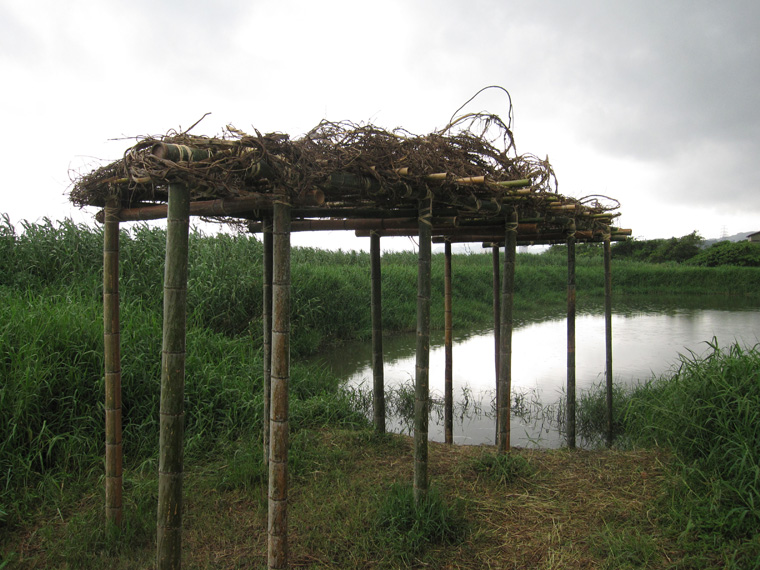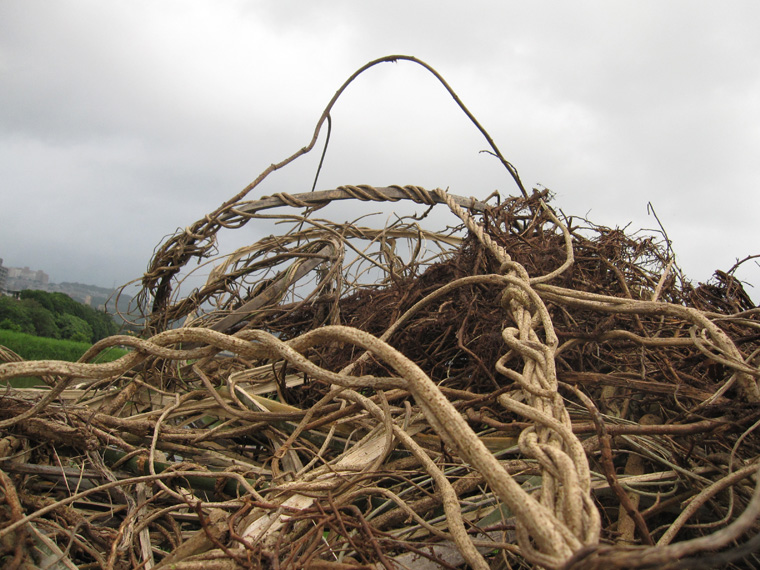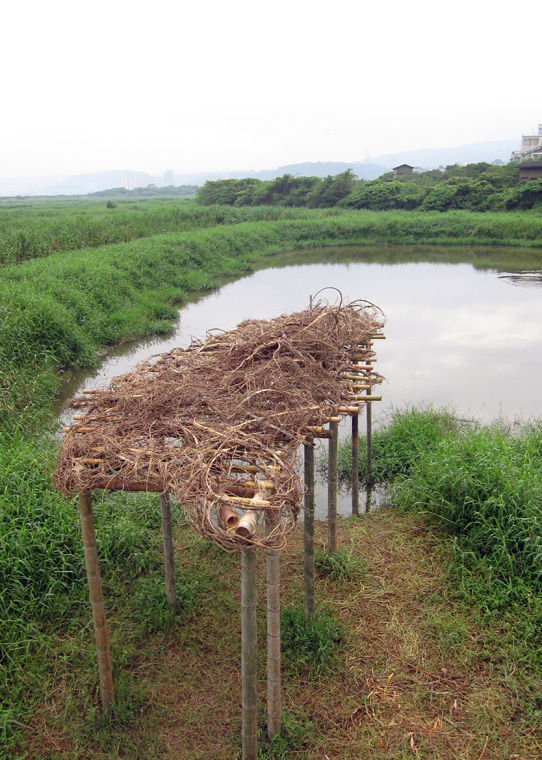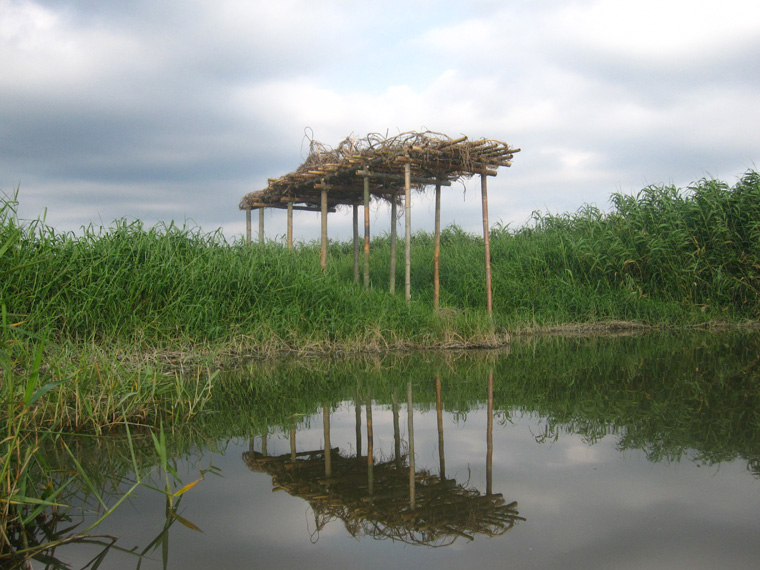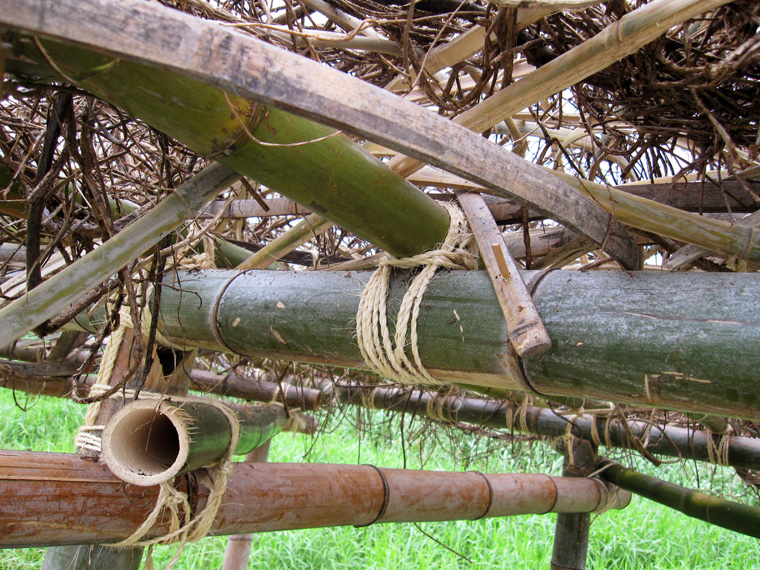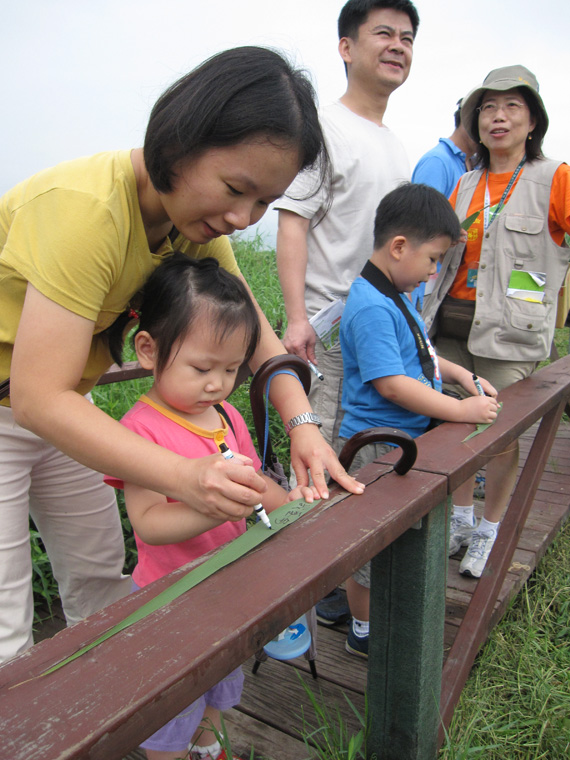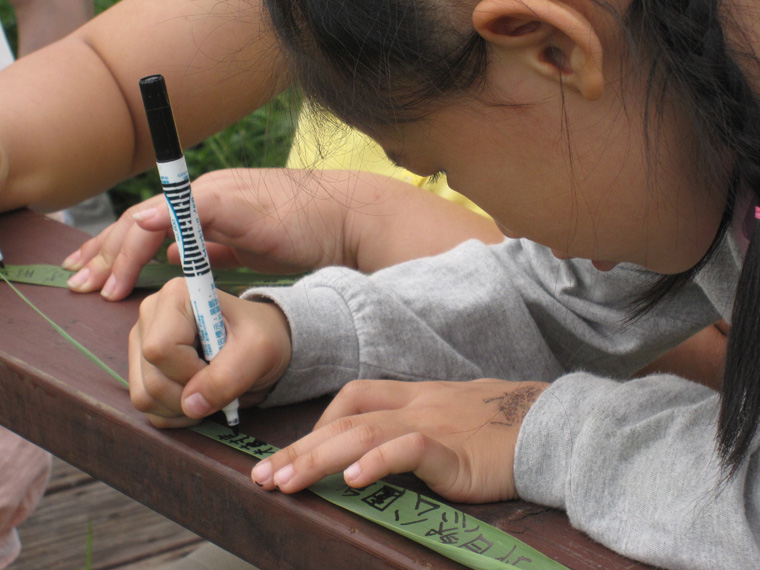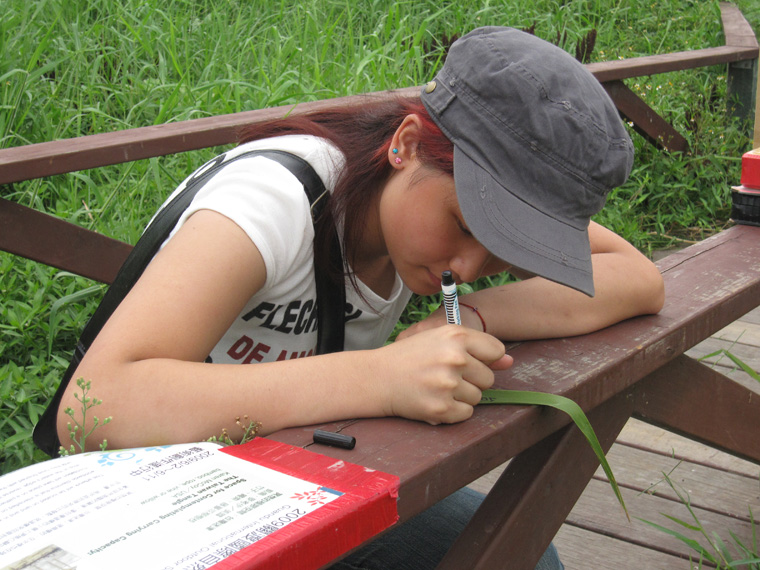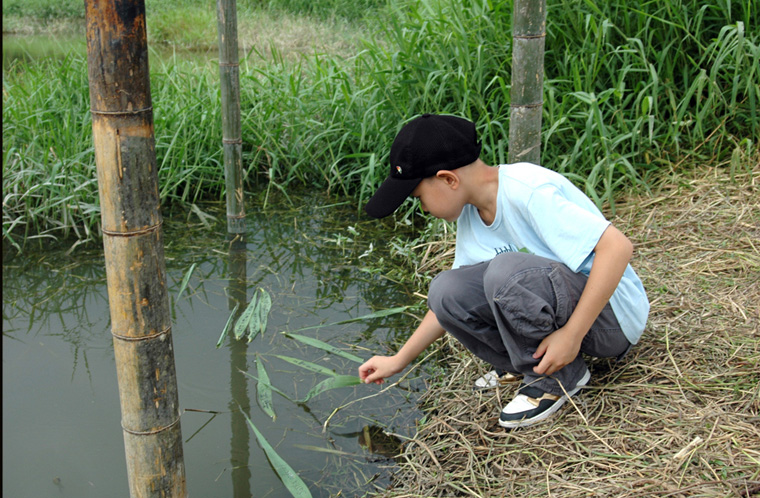The Taiwan Tangle: Space for Contemplating Carrying Capacity
Guandu Nature Park Sculpture Festival, 2009
The Taiwan Tangle: Space for Contemplating Carrying Capacity is sited on land and in water. It is constructed using bamboo and rope with split bamboo and tangled vine. The shape and proportions of the tangled shade roof are derived from the island of Taiwan, and approximately 24'L x 9' W x 8' T (inside). The topography of the "tangle" represents the topography of the island. Bamboo poles are set in earth and in the water, a gridwork of bamboo isl attached to these vertical supports to support the tangled vegetation of the shade roof. The tangle is bent, twisted and interwoven into the gridwork.
The Taiwan Tangle refers to the tangle that is literally over our heads in the sculpture. There, we are under the tangle and under, or inside the space of the island of Taiwan. The tangle is a physical manifestation of our mental state. It represents the complexity of the problems that face us as we push the limits of carrying capacity. Carrying capacity is a term environmentalists use to describe "the number of individuals who can be supported in a given area within natural resource limits, and without degrading the natural. social, cultural and economic environment for present and future generations" www.gdrc.org. The tangle is like a "dark cloud" hanging over all of us, but through it we can see glimpses of blue sky. The structure itself is a metaphor for home, that place which provides us with shelter, respite and protection, but only so long as we take care of our home. Our homes are indeed threatened, and those on an island more so than those on large continents. Carrying capacity refers to a worldwide dilemma that is intensified on a small island like Taiwan.The tangle represents the chaos that precedes clarity in our thought processes. Only with clarity can we conceivably alter our actions. Awareness of the chaos in our thinking provides for the possibility of change. In our reciprocal relationship with the earth, there is presently an imbalance. Our minds are not clear on how to respond to the conditions we have caused, and we continue to perpetuate the pollution of our air, water and soil. Taiwan has undergone a rapid transition from being an agrarian place to being an industrial place. There is confusion between old and new, between honoring the earth and abusing it, and a lack of understanding and active recognition about the part each of us plays in this current crisis. It is clear that how we conduct our lives each day has a direct effect on the problem. We can attempt to live in such a way as to reduce our harmful effect on the earth, or we may choose to ignore it. This work intends to focus attention on air, land, water and our own relationship to them.
As the title suggests, the sculpture is for contemplating. In the analogy proposed by this sculpture, Taiwan, a small bit of the earth anchored in the ocean, represents all the countries within our biosphere. The biosphere is defined as "the regions of the surface and atmosphere of the Earth (or other planet) where living organisms exist" wordnet.princeton.edu/perl/webwn. "The carrying capacity for any given area is not fixed. It can be altered by improved technology, but mostly it is changed for the worse by pressures which accompany a population increase. As the environment is degraded, carrying capacity actually shrinks, leaving the environment no longer able to support even the number of people who could formerly have lived in the area on a sustainable basis. No population can live beyond the environment's carrying capacity for very long." www.gdrc.org
The sculpture provides a space for individuals to contemplate these issues by walking on the earth beneath our feet and standing before the water within and beyond the shelter. The hope embodied in the work, and of the artist, is that by becoming more aware these issues, my fellow humans and I will return to our everyday lives with convictions related to energy conservation on personal and political levels. How large is our reach as individuals? Can we bring change within our own personal spheres of influence? What can we do in own individual and collective lives that will begin to make a difference? Can we drive less, eat more locally, grow our own food, compost our food waste to enrich the soil, exist in greater harmony with our own climates by building and planting to take advantage of such things as prevailing winds and shade, can we consume less and waste less, and perhaps most importantly, can we recover lost knowledge and discover new possibilities to teach our children about all these things? Viewers will be invited to meditate on these issues and their own possible actions by walking under the tangle and contemplating the air they are breathing, the path of earth under their feet, and the water in front of them.
The idea of walking meditation is to choose an object or an idea to focus the mind on. I asked viewers to focus on the quality of the environment, the air, land and waters of Taiwan (and the world) and to think about their hopes for the future condition of the environment. I requested that they write a hope or an action on a leaf taken from the reeds growing around the site. Viewers were instructed to walk slowly under the sculpture, stop at the end and float the leaf on the pond, to turn around and retrace their steps. As viewers left by the long boardwalk I suggested they might use it for a walking meditation on their hope or action.
About walking meditation: "Walking meditation has many facets; it can be considered simply as an alternative posture. As with any meditation, it is important to set boundaries: 'With walking meditation the path one selects creates a boundary. One chooses a level path - about 20 to 30 paces long-and marks either end in some way. This can be with sticks or rocks or piles of leaves - anything will do as long as it is quite clear. The defined nature of a path helps contain the mind and the tendency to wander. Begin at one end of the path. Bring attention to the body. Determine how long you will walk. Let go of expectations. Relax. The usual suggestion is to maintain the focus on the feelings at the soles of the feet - this helps define the boundary further. Walk with the eyes downcast, looking about three paces ahead. Proceed at a normal pace. Get to the end of the path - stop-turn around - begin walking again. Try for at least 15 minutes" www.buddhamind.info/leftside/lifestyle/medi/walk.htm
Viewers were encouraged to use the boardwalk as their path and to make a longer walk as they left the wetlands, or to engage the practice of walking meditation in the more traditional back and forth way described above.
